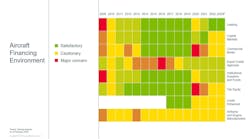July 24--LONDONDERRY -- History continues to fly high in Londonderry.
The Aviation Museum of New Hampshire opened its doors July 19 for a special day to remember the history of the Manchester airport when it was known as the Grenier Air Force base.
Men and women who either worked at the base or were stationed there between 1940 and 1966 were invited to attend.
Visitors were able to tour what was once known as the busy Grenier Field during wartime years. They heard all about its history and how it served the nation's pilots and military.
The airport has a long history with its beginnings in the late 1920s, following the popularity of Charles Lindbergh's transatlantic flight to Europe.
Lindbergh actually flew over Manchester soon after his flight in 1927 when he was heralded as a national hero. It was at this time the state of New Hampshire explored the possibility of bringing an airfield to the Manchester-Londonderry area.
The original airport, then known as Smith Field, opened in December 1927. Charter flights began a year later.
During the Great Depression, the U.S. Army Air Corps began seeking areas that could also serve as flight facilities and bases if needed for military service. The Manchester airport at that time fit the bill with expansion work completed to make the airport better equipped for more flight service.
Once World War II began, the Manchester airport ceased civilian flights and became focused on the war effort, becoming a major location for troops being deployed to Europe.
The airfield was named for pilot 2nd Lt. Jean Donat Grenier of Manchester, who was killed in 1934 at the age of 24 while flying a training mission in Utah.
Grenier was used heavily during war years as a training facility for bomb squadrons heading overseas.
Author Maurice Quirin spoke about Grenier during a presentation at the museum and said the airfield did its duty during World War II.
He said for thousands of pilots and military personnel, the field was the last contact they had with the United States before they flew overseas.
"Many didn't make the return trip," Quirin said.
Thousands of soldiers and airmen served at Grenier, as did thousands of civilian workers, providing support for military operations. Historical records state that at the height of the field's service, more than 6,000 people were stationed and trained there.
The base provided medical facilities for those returning wounded from Europe and served as air transport command headquarters, helping transport more than 20,000 aircraft to bases overseas.
Many remembered those Grenier years and came to the museum to see the displays and hear the history.
That included 91-year-old veteran Robert Fortnam. He said he has been flying planes for 71 years, some leaving the local airfield.
"It's good to come back and see friends," Fortnam said.
Air Force veteran Lionel Leblanc, 89, said coming to the museum to relive the Grenier years was special.
"This means a lot to me," the Manchester man said.
Leblanc served during World War II in the South Pacific. He had many strong memories of the air base, and the hard work and sacrifice the military personnel and crews had to endure during the tough wartime years.
The Grenier era eventually ended when the Air Force relocated all remaining flying units to other air bases.
Jessica Pappathan, the museum's new executive director, said having the museum open its doors for a day of Grenier Field history is what the facility does best -- showing off the rich past of the state's pilots and planes.
That included inviting those that had a connection to the air field to come back for the day.
"So many people flew out of here," Pappathan said. "That was our hope that we would get some pilots to come back."
Pappathan, a Derry resident, said she is enjoying her job at the museum and hopes more people will stop by to learn about the state's flying history. That history includes the Grenier years and also notable citizens like the first American in space, Alan B. Shepard, and Christa MacAuliffe, the first teacher in space aboard the space shuttle Challenger.
"This is endlessly fascinating for people," she said.
Museum volunteer Glenda Fischer said she is impressed with New Hampshire's flying history.
"And I think, little old New Hampshire has all this?" she said.
The Aviation Museum is located at 27 Navigator Road in Londonderry.
Copyright 2014 - The Derry News, N.H.

